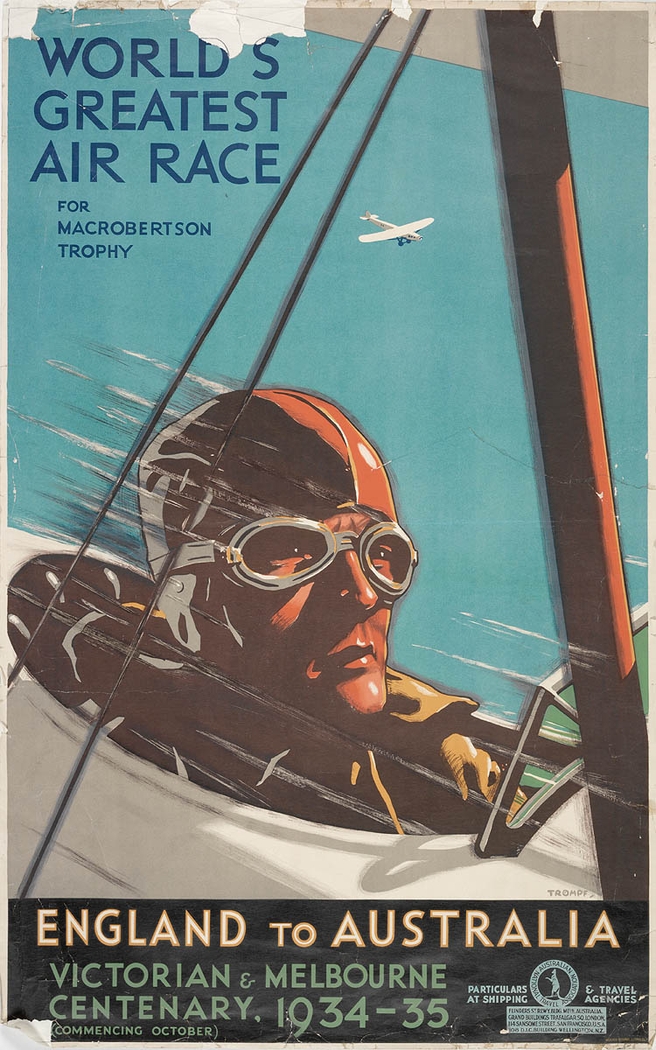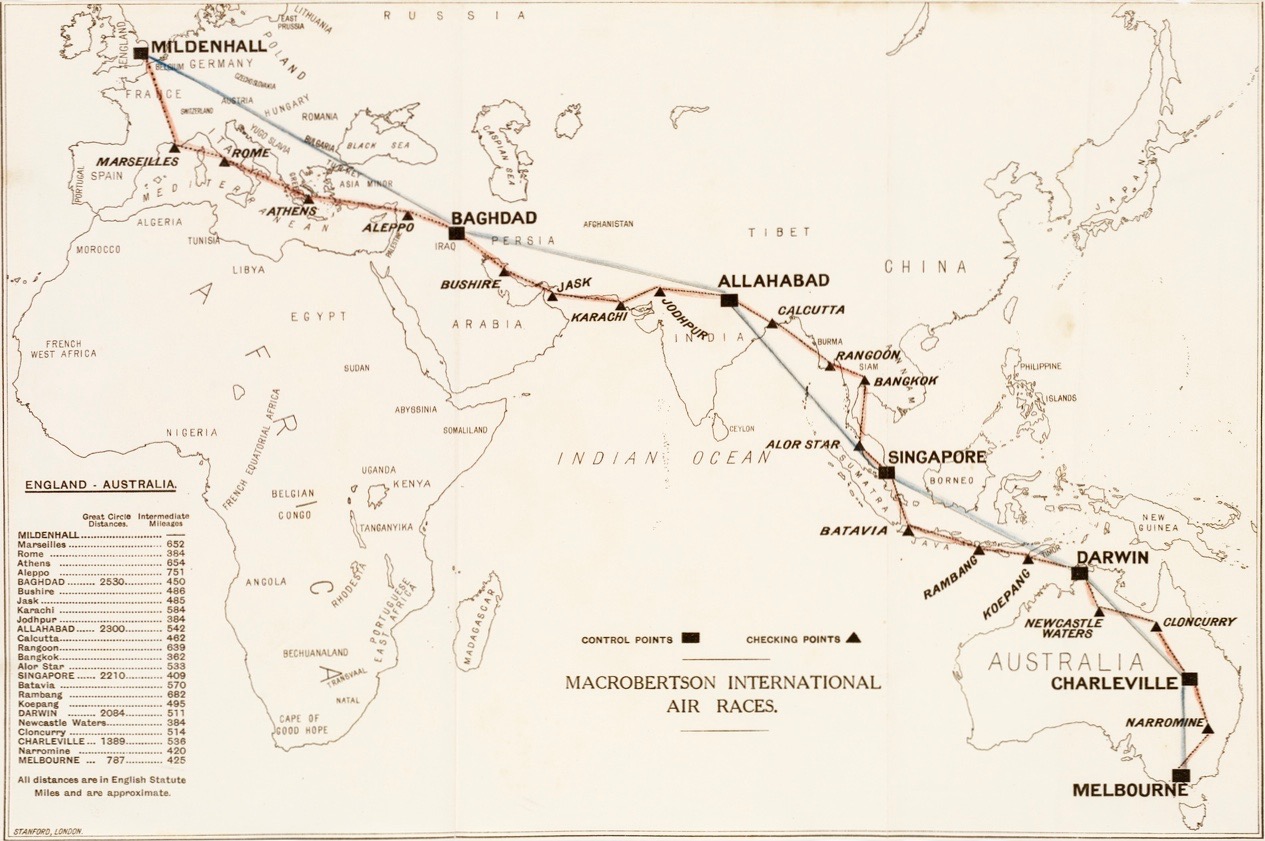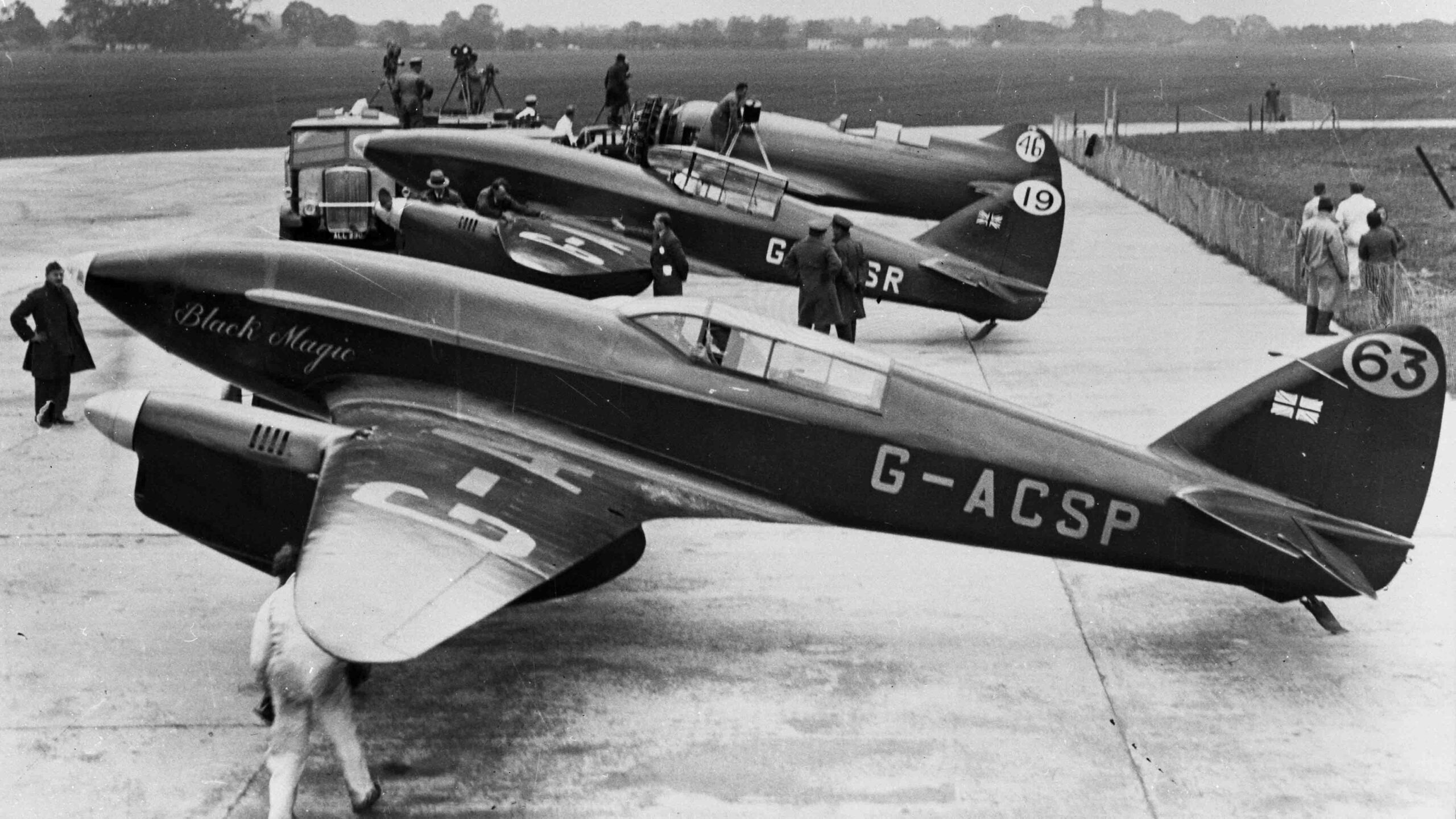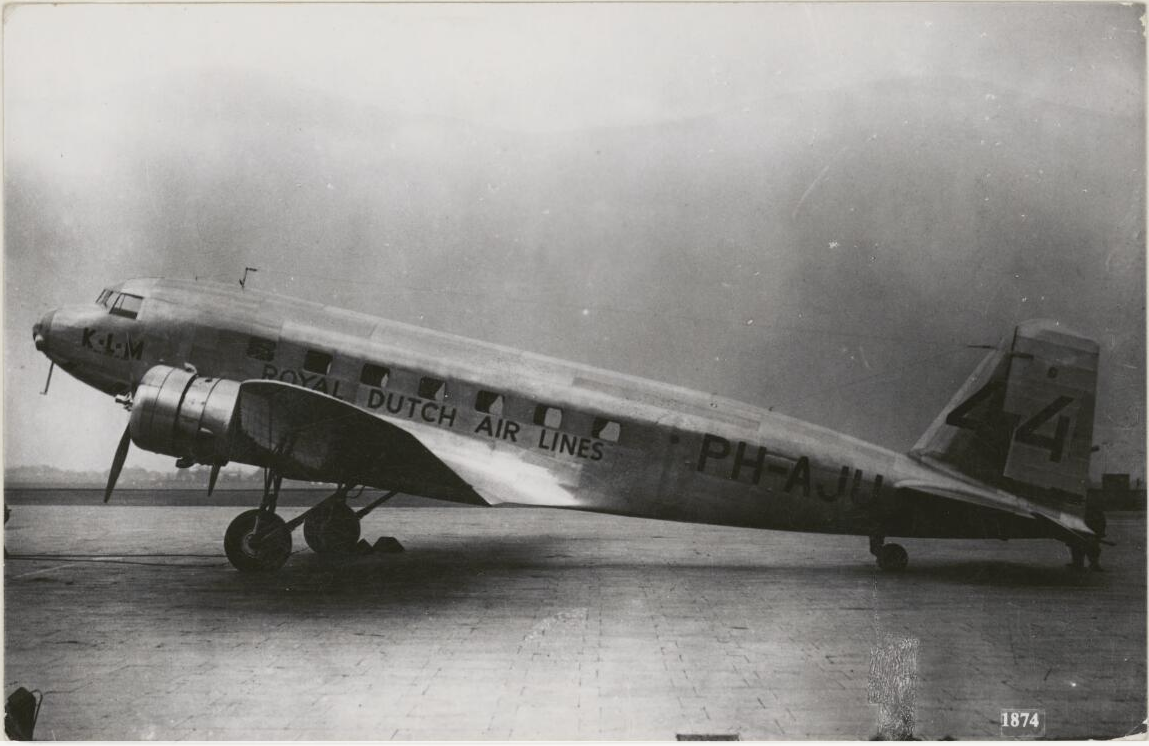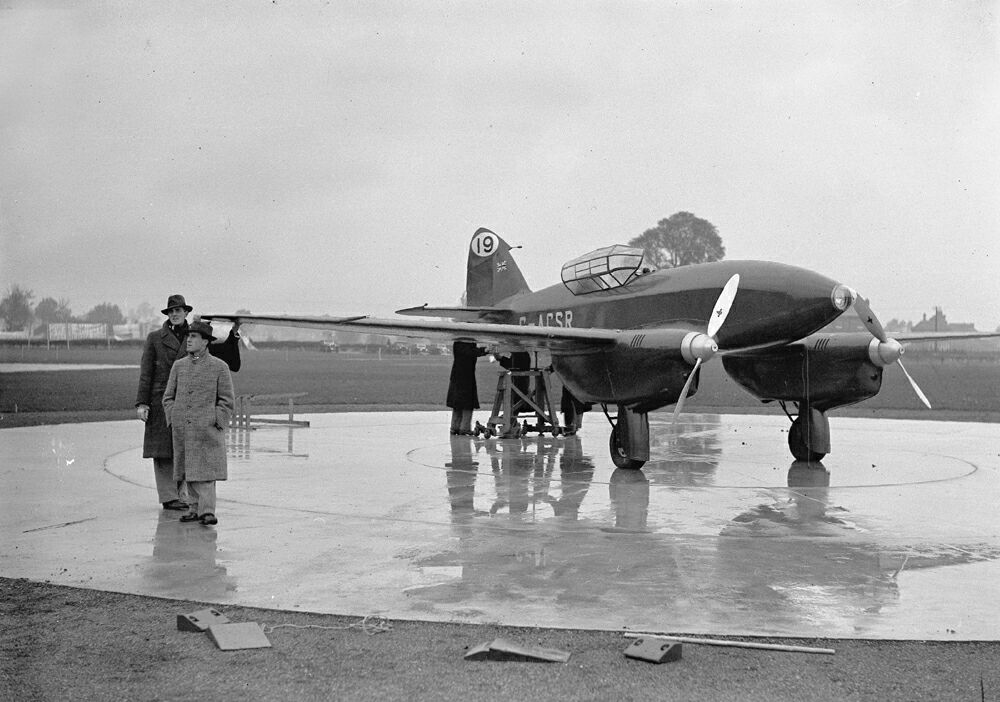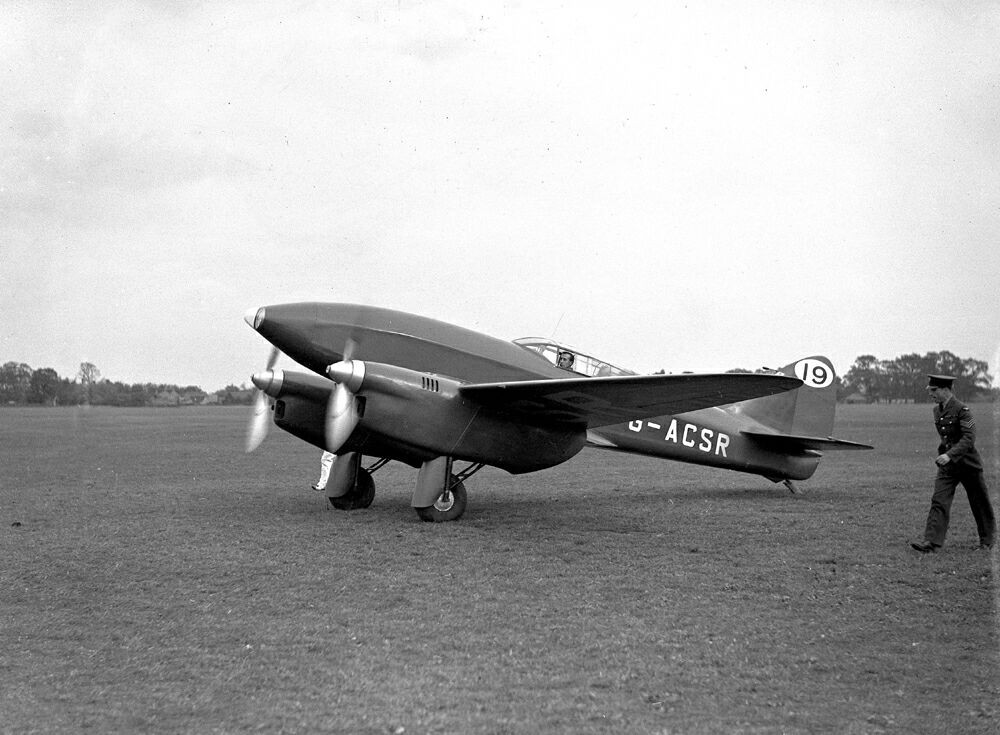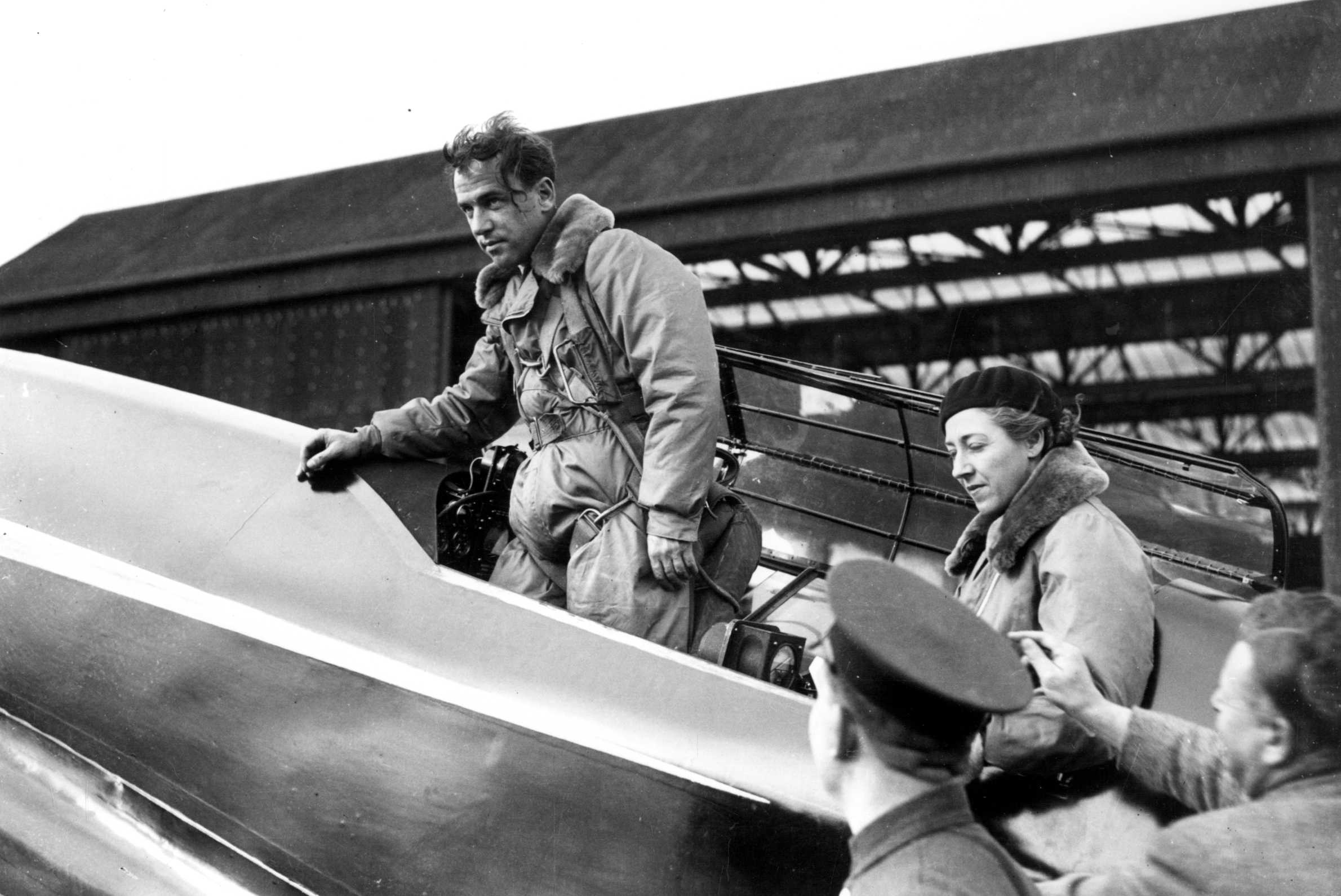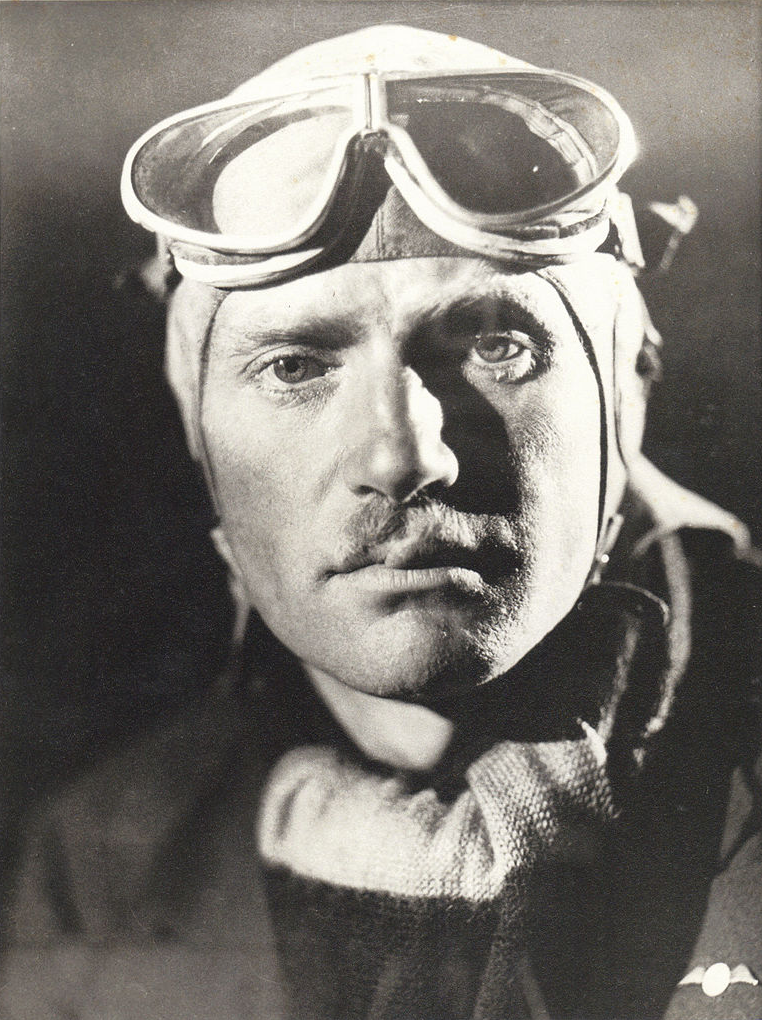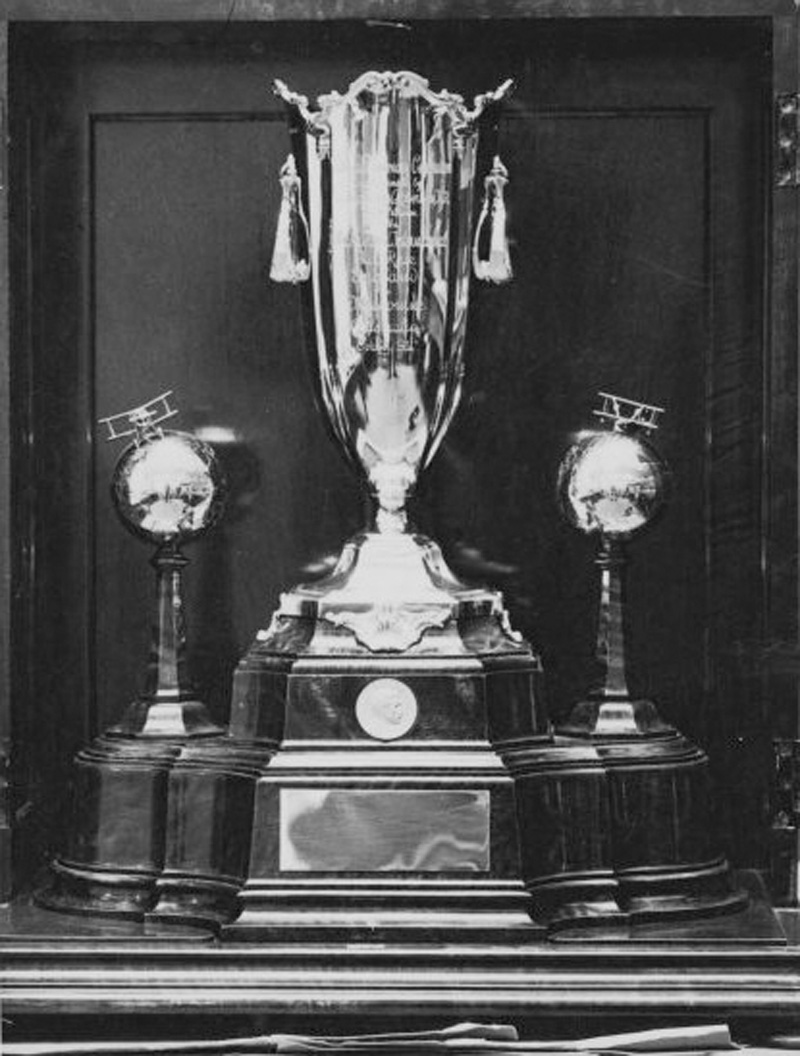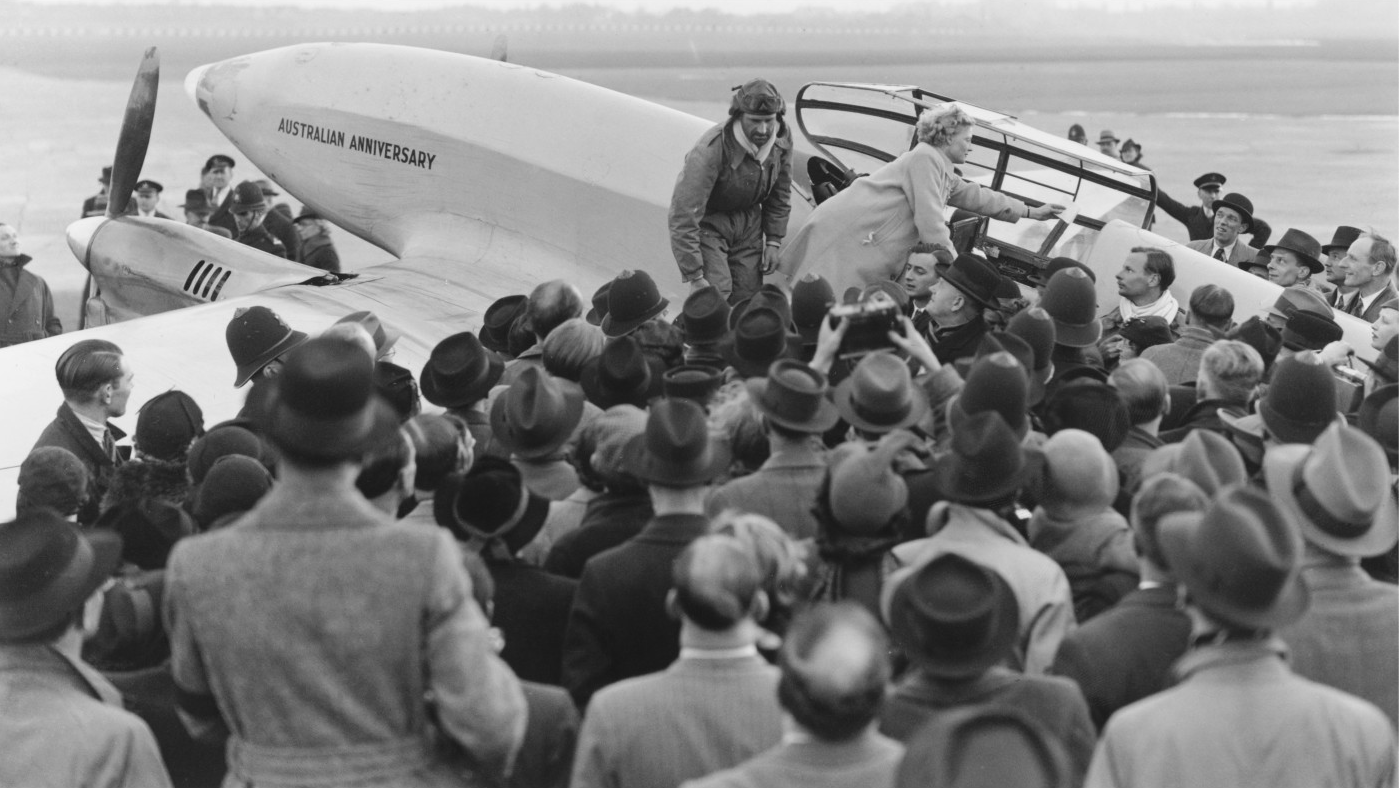
26 March 1938: On Saturday afternoon at 5:40 p.m., RAE Farnborough test pilot Flying Officer Arthur Edmond Clouston ¹ and his co-pilot, newspaper correspondent Victor Anthony Ricketts,² landed at Croydon, London. England, completing an 11-day, 26,450-mile (42,567 kilometers) round trip flight from England to New Zealand and return. Their airplane, a twin-engined de Havilland DH.88 Comet, G-ACSS, named Australian Anniversary in honor of the 150th anniversary of the founding of Australia, finished the course in 10 days, 21 hours, 22 minutes. During the flight, four Fédération Aéronautique Internationale (FAI) World Records for Speed Over a Recognised Course were set.³
The Comet was one of three built especially for the 1934 MacRobertson Trophy Air Race, England to Australia, which it had won with an elapsed time of 70 hours, 54 minutes.
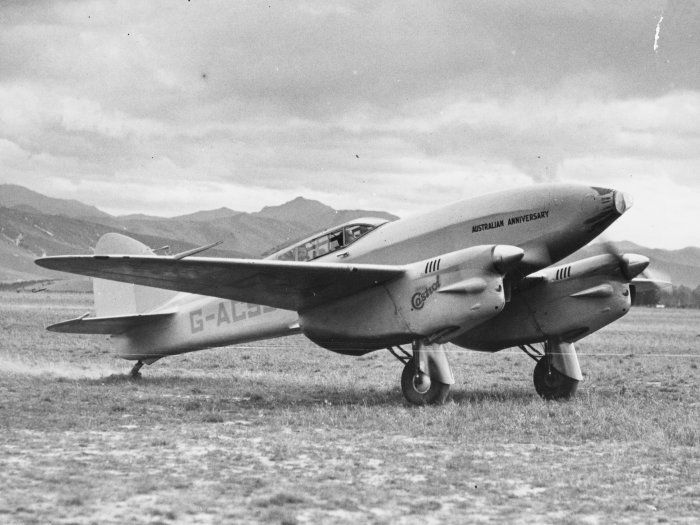
Clouston and Ricketts departed Gravesend, Kent, England, at 8:17 p.m., Tuesday, 15 March 1938. They arrived at Blenheim, on New Zealand’s South Island, at 04:57 G.M.T., Sunday, 20 March. They began the return trip at 10:20 G.M.T., 21 March.
After listing the stops during the flights, with times and distances for each leg, FLIGHT commented:
Set down thus in bare figures, that it may be kept on record, the story of the flight sounds, perhaps, prosaic. But against this background may be pictured the actual sensations of the two men who made it; the ten-hour 2,000-miles stretches, sometimes protracted to 12 hours by head winds; the incessant roar, scream and bumping in the cramped tandem cockpit, the desire for sleep; the anxieties of taking-off from small aerodromes in “thin” tropical air with nearly a ton of petrol; fog, cloud and thunderstorms, all of which were encountered. These things considered, one may marvel at the enthusiasm of people who will do them—and it so happens that quite “uncommercial” enthusiasm has played a large share in the present flight.
—FLIGHT, The Aircraft Engineer & Airships, No. 1527, Vol. XXXIII, 31 March 1938, Page 318, Column 2
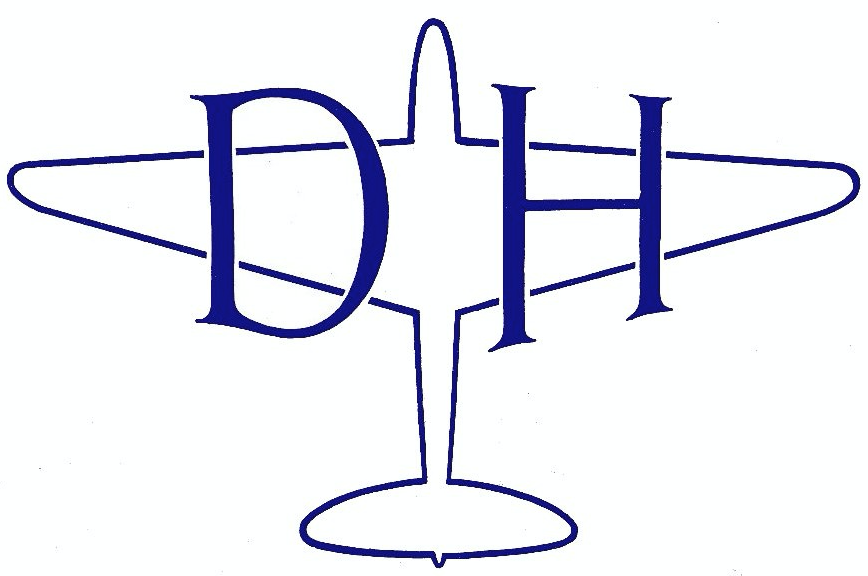
The airplane was 29 feet, 0 inches (8.839 meters) long with a wingspan of 44 feet, 0 inches (13.411 meters) and overall height of 10 feet, 0 inches (3.048 meters). It had an empty weight of 2,930 pounds (1,329 kilograms) and loaded weight of 5,500 pounds (2,495 kilograms).
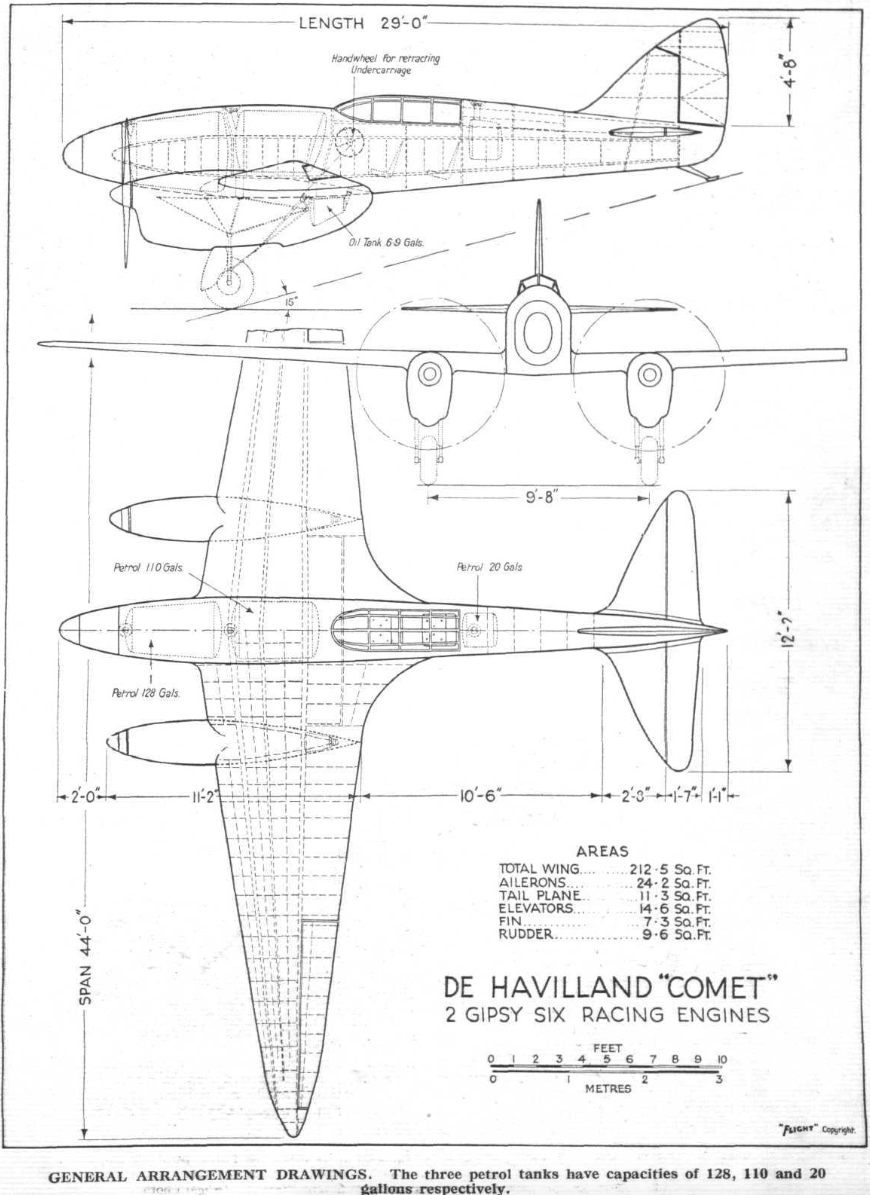
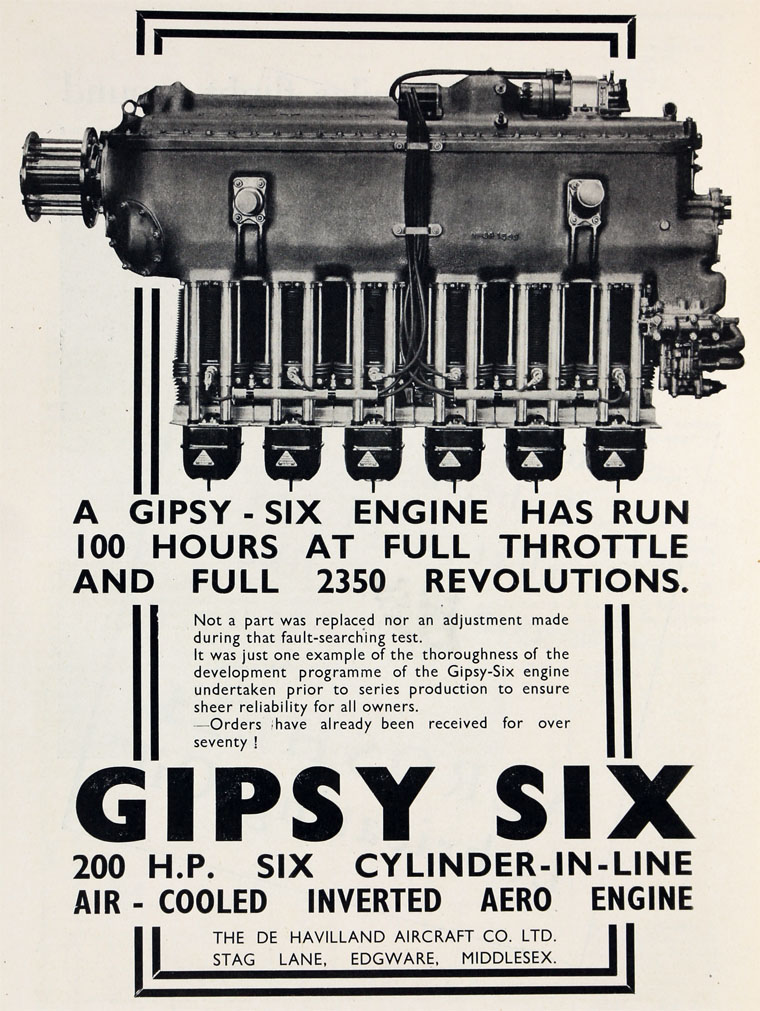
The Gipsy Six R engine was designed by Major Frank Bernard Halford C.B.E. F.R.Ae.S., who had designed the four-cylinder de Havilland Gipsy engines and would later design the Goblin and Ghost turbojet engines. Halford was awarded the Silver Medal by the Royal Aeronautical Society for his work on the DH.88 Comet in the MacRobertson race.
The DH.88 had maximum speed of 255 miles per hour (410 kilometers per hour). Its range was 2,925 miles (4,707 kilometers). The service ceiling was 19,000 feet (5,791 meters).
Two additional DH.88 Comets were built. Of the five, one crashed in the Sudan in 1935. The crew safely bailed out. Two more were destroyed in a hangar fire at Istres, France, in June 1940. G-ACSP, Black Magic, which had been flown by Jim and Amy Mollison in the MacRobertson Trophy Race, was located in Portugal and is under restoration at Derby Airfield, England.
De Havilland DH.88 Comet c/s 1966 was purchased by Arthur Octavius Edwards (better known, simply, as A.O. Edwards), and registered G-ACSS, 4 September 1934. Edwards named the airplane Grosvenor House, after a luxury hotel in Park Lane which he had developed from “the biggest and most spectacular” mansion in London.

In June 1935, G-ACSS was “taken charge” by the Air Ministry for flight testing. It was re-painted silver and assigned the RAF identification K5084. While undergoing flight testing, the Comet was damaged during a landing at the Aircraft & Armaments Engineering Establishment (A&AEE) at RAF Martlesham Heath and sold as scrap. It was purchased by Frederick E. Tasker, an architect famous for his Art Deco buildings, and rebuilt by Essex Aero Ltd., Gravesend. Essex replaced the Gipsy Six R engines with Gipsy Six Series II angines.
By June 1937 the racer was once again airworthy. It carried the identification mark “E.1” on the fuselage before reverting to G-ACSS. Flown by A.E. Clouston, it competed in the Istres–Damascus–Paris air race of August 1937, placing fourth.
In October–November 1937, Clouston flew G-ACSS from London to Cape Town and return, establishing records in both directions. ⁴ The Comet was again re-painted, this time beige, and re-named The Burberry after its new sponsor, Burberry Ltd., makers of the classic gabardine “trench coat.”
The Comet was placed in storage and scavenged for parts during World War II. De Havilland employees restored G-ACSS in 1951. It was donated to The Shuttleworth Collection in 1965.
G-ACSS has been restored to flying condition and is in the Shuttleworth Collection at Old Warden Aerodrome, Bedfordshire, England.
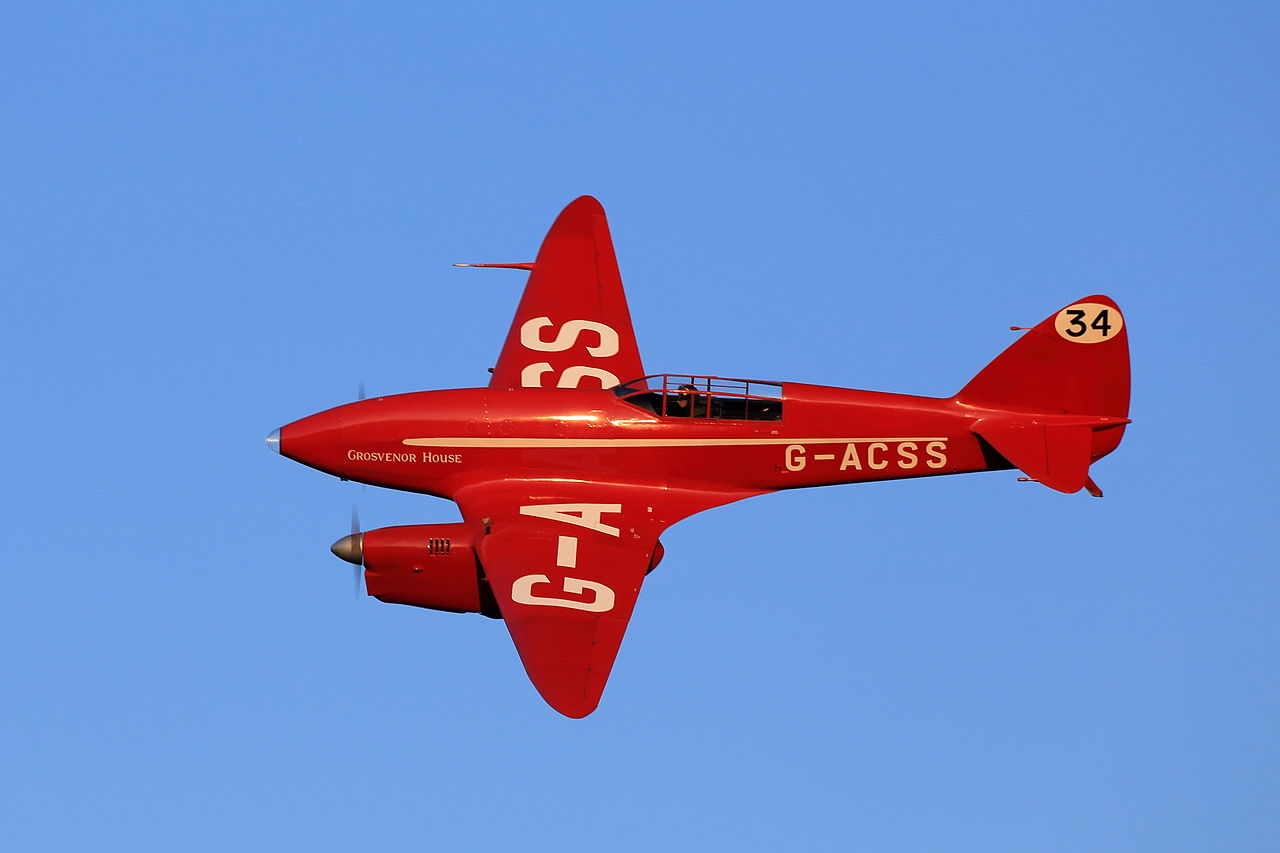
De Havilland’s experience with the Comet led directly to their success with its big brother, the famous World War II fighter bomber, the DH.98 Mosquito.
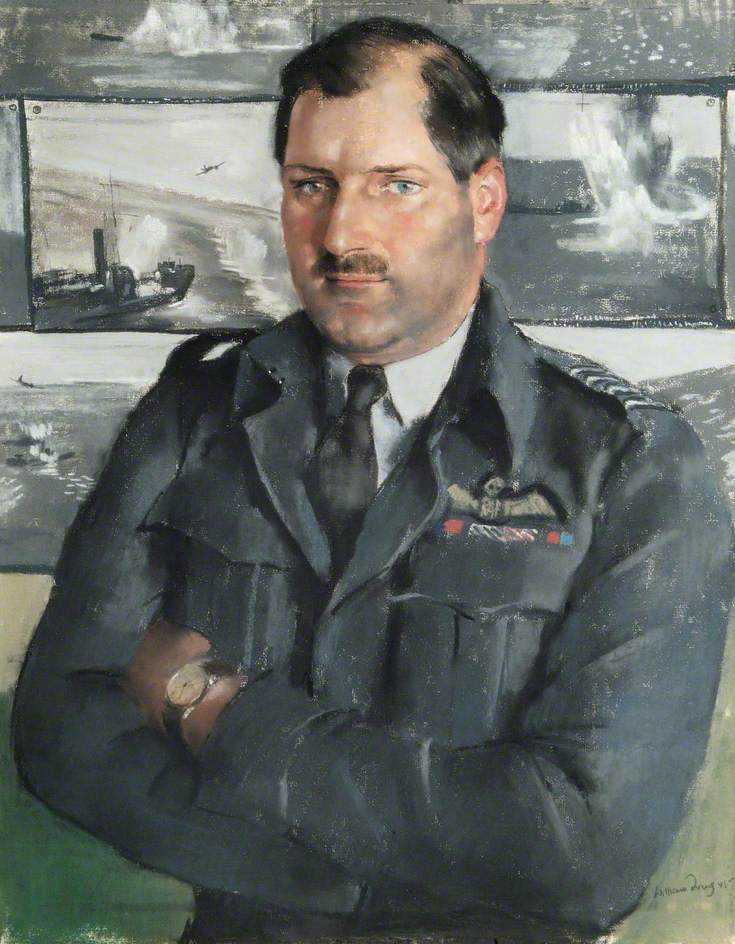
¹ Air Commodore A.E. Clouston, C.B., D.S.O., D.F.C., A.F.C., Royal Air Force (29162)
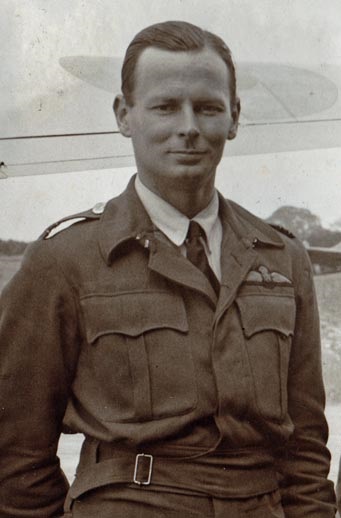
² Flight Lieutenant Victor Anthony Ricketts, D.F.C., Royal Air Force Volunteer Reserve (77341), flying a DH.98 Mosquito B Mk IV with No. 248 Squadron, was killed in action 12 July 1942.
³ FAI Record File Numbers: 13253, 19 March 1938, 209,71 km/h (130.31 m.p.h.); 13254, 20 March 1938, 180,26 km/h (111.85 m.p.h.); 13255, 26 March 1938, 134,31 km/h (83.46 m.p.h.);, and 13256, 26 March 1938, 130,78 km/h (81.26 m.p.h.).
⁴ FAI Record File Numbers: 13242, 16 October 1937, 214,08 km/h (133.02 m.p.h.); 13259, 20 November 1937, 168.26 km/h (105.55 m.p.h.)
© 2019, Bryan R. Swopes
